The Shaolin Monastery
- Details
- Written by AndEl
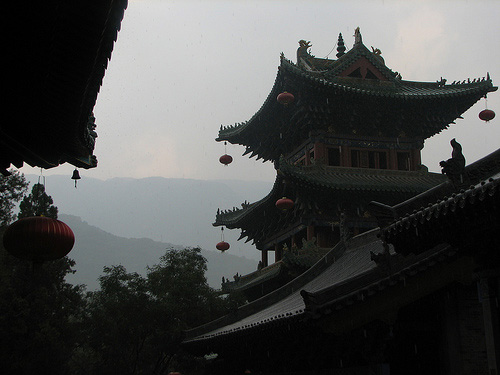
Origins and History of the Shaolin Monastery
At several points in the long recorded history of China, Buddhism has fallen out of favor with the ruling classes, and temples have been shut down or even burned to the ground.
One temple that has survived relatively well is the Shaolin Monastery in Henan Province - in part because the warrior monks of Shaolin have used their kung fu (gong fu) skills to fight for different emperors through the ages.
200 - 622 A.D.
History of the Shaolin Temple from its foundation by an Indian (?) teacher through its destruction in 622 A.D.
2nd Century A.D. - First Buddhist temples built on Songshan
Songshan is a mountain in central Henan Province, about 30 miles (48 kilometers) southeast of the ancient capital city of Luoyang. It is the site of the Shaolin Temple.
c. 464-480 - Buddhabhadra (Batuo) arrives from India, teaches Buddhism in China
Batuo is also known as Fotuo in some Chinese texts. Batuo's teachings are supposed to have had an influence on the development of Chan Buddhism (called Zen in Japan), which emphasizes reliance on learning from masters rather than from Buddhist texts.
The Indian monk became Shaolin Temple's first abbot c. 495. Two of Batuo's disciples purportedly were experts in martial arts, and may have started Shaolin's martial tradition.
c. 485 - Huike cuts off arm to prove his desire to learn from Bodhidharma
Bodhidharma was another western monk, from either India or Persia, depending upon the source. He is often depicted as a goggle-eyed being with bristling hair and a large, round nose.
According to the legend, Bodhidharma's first Chinese disciple stood in the snow for days to try and convince the Indian master to teach him. Bodhidharma refused, so to prove his sincerity, Huike cut off his own right arm. This tactic worked, and he became Bodhidharma's first student. Huike later taught many students of his own until his death c. 555.
496 - Emperor Xiaowen gives Batuo funds to build Shaolin Temple
Emperor Xiaowen (reigned 471-99) was a member of the Northern Wei Dynasty. An ethnic Xianbei (related to the Mongols), he encouraged his people to adopt Han Chinese surnames and intermarry with Chinese. With imperial support, Buddhism displaced Taoism as the dominant religion. He also moved the imperial capital to Luoyang, a city only 30 miles from the site of the Shaolin Monastery.
534 - Fall of the Northern Wei Dynasty and city of Luoyang; temples destroyed
It's not clear from the historical record if Shaolin was among the temples sacked during this imperial transition.
c. 600 - Sui Dynasty Emperor Wendi awards Shaolin estate and income
The emperor (reigned 581-604) gave the Shaolin Temple a 1,400-acre estate and the right to run a water mill for grinding grain - a common source of income for monasteries at that time.
c. 610 - Shaolin monks ward off attack by bandits
The temple had already acquired enough wealth to be a target by this time. There is no record of what types of weapons or fighting methods the monks used to fend off the bandits.
620 - Warlord Wang Shichong captures Shaolin Temple estate lands
621 - Shaolin monks fight Wang Shichong with Prince of Qin, capture fortress
The Prince of Qin, Li Shimin, later had his older brother killed and became the second emperor of the Tang Dynasty. He was generally anti-Buddhist, but the Shaolin Temple got special consideration due to the warrior-monks' help against Wang Shichong. On May 23, 621, monks helped to capture Wang's fortress and seized the warlord's nephew as a hostage.
622 - Shaolin Monastery shut down, monks forced to return to lay life
Many of the Tang rulers feared the warrior monks as a potential destabilizing force. Throughout the Tang era, there were a number of wide-spread purges of Buddhist monasteries.
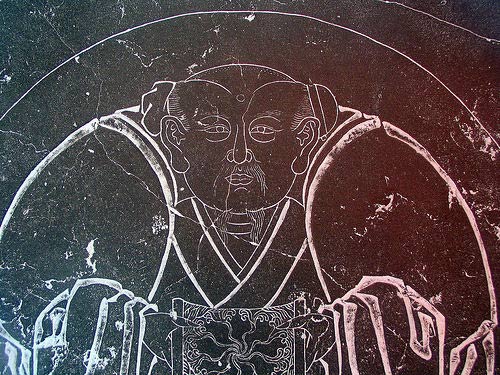
Timeline of the Shaolin Temple's History in the Tang Era
"When China's rulers favored Daoism over Buddhism, it caused trouble for Shaolin and other temples"
624 - 728 A.D.
Although the fighting monks of Shaolin Temple helped to establish the Tang Dynasty's rule over China, they did not entirely escape the anti-Buddhist purges that swept the country several times during the Tang Era.
624 - Shaolin allowed reopening because of military services rendered
Although the Tang emperor cracked down on all of the Buddhist temples in 622, he relented and allowed Shaolin to reopen after two years.
May 26, 625 - Li Shimin formally returns 560-acre estate to Shaolin
Although the second Tang emperor made this gesture of good faith to the Shaolin Monastery, he continued to crack down on Buddhism in general.
629 - Li Shimin orders execution of "illegally ordained" Buddhist monks
638-89 - Master Faru teaches Chan Buddhism at Shaolin
645 - Monk Xuanzang refuses to join Emperor Taizong's invasion of Korea
The monk cited his vow of non-violence in refusing to help attack the Korean kingdom of Goguryeo.
c. 700 - Empress Wu Zetian gives 10-story stupa and stele to temple
Wu Zetian was the only woman in Chinese history to rule as empress in her own right (rather than as a regent for a son or nephew). She was a far more devout Buddhist than most Tang rulers, and presented valuable gifts to the Shaolin Temple.
?-709 - Master Huian teaches principles of Chan at Shaolin Temple
8th c. - Flowering of Chan Buddhism across China
722 - Emperor Xuanzong confiscates all monastic lands except Shaolin's
The emperor idolized his ancestor, Li Shimin, so spared the Shaolin Temple's estate because of the monks' aid in the earliest days of the Tang Dynasty.
728 - Shaolin si bei (Monastery Stele) erected with 7 texts engraved on it
The stele likely was put up at this time to remind China's rulers of the role that Shaolin's monks played in the establishment of the Tang Dynasty. The seven texts engraved on the Monastery Stele are about the monks' military feats.
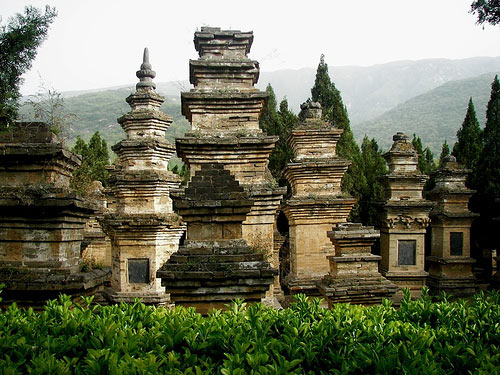
Shaolin Temple in the Tang through Ming Eras
"Engravings on the stupas are an important piece of Shaolin's historical record."
841 - 1580 A.D.
Throughout this era, the warrior-monks of Shaolin Temple were busy fighting both defensive and offensive battles. As the fame of Shaolin martial arts spread across China, many military and lay students came to the monks to learn kung fu.
c. 841 - Emperor Wuzong destroys monasteries, but spares Shaolin
Even though the Emperor Wuzong was determined to crush the power of the Buddhist monks and purge the temples, he also idolized his ancestor Li Shimin. Because of the Shaolin monks' help to Li Shimin in 621 A.D., Wuzong excluded the temple from his purge.
1125 - Shrine built to Bodhidharma, 1/2 mile from Shaolin
The shrine was built some distance away from the main temple because the Indian sage had been quite solitary, even meditating in silence for 12 years, according to the legends.
April 22, 1351 - Shaolin is attacked during Red Turban (Hongjin) Rebellion
According to the legend, the temple was defended by a warrior deity or Bodhisattva who had been disguised as a lowly kitchen worker. He grabbed a staff, grew to gigantic size, jumped up onto the peaks of Mt. Song, and scared the Red Turbans away without a fight. The Bodhisattva is known as Vajrapani or Narayana. In fact, the temple actually was destroyed at this time, and the monks were all killed or driven out.
c. 1500 - Shaolin monks are known throughout China for fighting skills
1511 - 70 Shaolin monks die fighting bandits
Bandit armies flooded Hebei and Henan Provinces; the Shaolin monks marched out to fight them, and took fairly heavy casualties.
?-1548 - Shaolin monk travels the country, teaching 1,000+ students
The monk Sanqi Yougong taught martial arts throughout Henan, Hebei, Shandong and Jiangsu Provinces.
1540s-50s - Pirate raids intensify on China's coasts
The pirate’s bands were international, with members from Japan, China and even Portugal.
1553-55 - Shaolin monks mobilized for 4 battles against pirates
The monks fought ruthlessly against the pirates, wiping out one band in the Battle of Wengjiagang.
c. 1580-90 - Official Wang Shixing accuses Shaolin monks of breaking vows
He claimed, probably with good reason, that the Shaolin monks were eating meat and drinking alcohol in violation of their monastic vows.
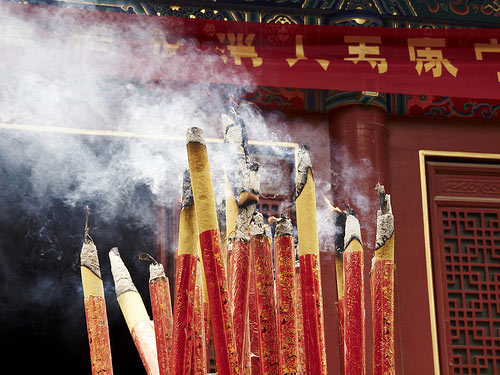
Shaolin Temple During the Late Ming and Early Qing Eras
"These joss sticks are an offering to the deities."
1587 - 1679 A.D.
The transition period between the ethnically Han Chinese Ming Dynasty and the ethnically Manchu Qing Dynasty was chaotic and violent, and the Shaolin Temple's fighting monks found themselves on the wrong side in this war.
1587 - Empress Dowager Zisheng gives edition of scriptures to Shaolin
The woodblock print edition came in 637 volumes. Empress Dowager Zisheng's son also wrote a letter citing the Shaolin monks' "defense of the state and protection of the people" as the reason for this gift.
1588 - Thousand Buddhas Hall built to house Zisheng scriptures
The Thousand Buddhas Hall (Qianfo dian) was built to house the scriptures. It is the largest building at Shaolin Temple.
1610 - Compilation and publication of "Shaolin Staff Method"
Author Cheng Zongyou's book on staff fighting is the first known volume about Shaolin martial arts.
17th century - Shaolin monks develop empty-hand fighting techniques
Previously known mostly for their staff-fighting skills, the Shaolin monks developed a complimentary series of empty-hand fighting techniques. These included "Drunken Eight-Immortals Fist" (made famous centuries later by Jackie Chan) and "Confounding-Track Fist."
1630 - Period of anti-Ming rebellions; Shaolin monks fight for Ming
The Ming were losing power under invasions from the north and rebellion in the south; the Shaolin Temple backed the wrong side in this fight, unfortunately.
1641 - Rebel Leader Li Zicheng destroys Shaolin's army, sacks temple
Shaolin's monks were killed or driven out, and the temple lay mostly deserted for decades afterward.
1644 - Manchu conquest of the Ming, founding of Qing Dynasty
China's last imperial dynasty, the Qing would rule until 1912.
1664 - Abbot Yongyu leaves without naming a successor; no abbot until 1999
Although a few monks held out at Shaolin during this dark period in its history, nobody followed Yongyu as abbot. The Chinese Communist government named the next abbot more than 300 years later, when it appointed Abbot Yongxin in 1999.
1674 - Legend that Shaolin monks rescued Kangxi Emperor from nomad army
The story, probably apocryphal, states that the Xi Lu nomads defeated the Qing army and nearly captured the emperor, who was saved by Shaolin monks. He honored the monks for their assistance, but a group of envious and treacherous government officials then burned down Shaolin, killing most of the monks.
1679 - Historian Gu Yanwu travels to remains of Shaolin
Gu recorded the temple's military history from the stelae, which had not been destroyed in the turmoil of the previous decades.
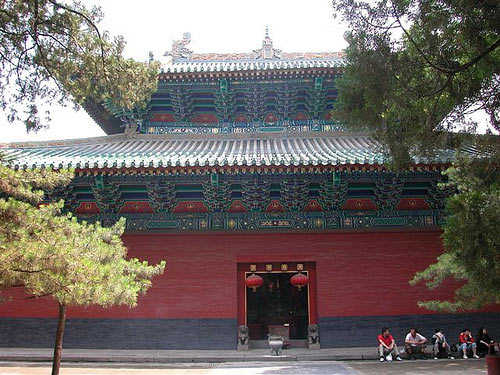
Shaolin Temple During the Qing Era
"Shaolin looks like a typical temple, but its martial history is anything but ordinary."
1680 - 1900 A.D.
During the reign of China's last imperial dynasty, the Qing, Shaolin Temple underwent massive changes in its martial arts style, its political position and its reputation throughout China.
1680s-90s - Shaolin begins to recover from Ming/Qing transition turmoil
1704 - Kangxi Emperor gives gift of his own calligraphy
This imperial donation marked the return of Shaolin Temple to favor with the court.
18th century - Empty-hand fighting eclipses staff fighting at Shaolin
For centuries, the monks of Shaolin had been known for their excellence in fighting with the wooden or iron staff. Perhaps in an effort to placate the Qing rulers, Shaolin monks turned to empty-hand kung fu techniques more and more during the 18th century. Fighting with a staff or other traditional weapons such as spears and swords is much more effective militarily, and thus more of a potential threat to the rulers. Empty-hand fighting can be justified more easily as a harmless method of meditational movement, and as a simple physical fitness routine.
1735 - Yongzheng Emperor approves plans for major renovations at Shaolin
The renovations included the removal of "fake monks" - men who dressed as monks and practiced Shaolin martial arts, but were not actually ordained monks. These fake monks sometimes contributed to the Shaolin monks' reputation for flouting their monastic vows, since the fake monks would freely eat meat and drink alcohol.
1736 - Qianlong Emperor sends officials to raid and purge temple
The Qianlong Emperor went beyond his father's plans for cleansing Shaolin of fake monks.
1739 - Mongolian official Yaertu charges Shaolin with training gangsters
Yaertu alleged that under the guise of religious training, the Shaolin Monastery was teaching martial arts techniques to bandits and heterodox Buddhists, preparing them for a life of crime and rebellion.
1750 - Qianlong Emperor visits Shaolin and writes four poems about it
The Emperor even spent the night at the temple, and was so enchanted by the setting that he composed original poetry about the site.
1775 - Qianlong Emperor forbids monks from training troops, fighting
Despite his appreciation for the temple 25 years earlier, the Qianlong Emperor saw Shaolin and its martial arts practices as a threat. He banned the monks from teaching martial arts techniques to the military, and from deploying for battle themselves.
1784 - Cao Huandou publishes "Hand Combat Classic" based on Shaolin kung fu
In particular, this book illustrated the techniques of Shaolin Close-Range Fist fighting.
1832 - County magistrate warns Shaolin monks to obey monastic vows
The magistrate made some familiar charges against the Shaolin monks - that they were eating meat and drinking alcohol - and also accused them of hiring prostitutes.
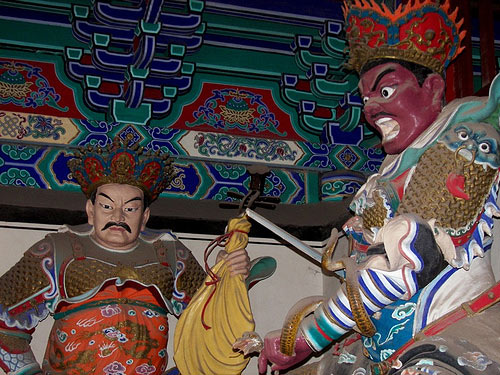
Shaolin Temple in the 20th Century
"These brightly-painted guardians are obviously fairly new."
The twentieth century saw cataclysmic changes in Chinese government and society. From the Boxer Rebellion and the fall of the last emperor, to the rise of communism and the growth of China's tourism and movie industries, these changes had a massive impact on the Shaolin Temple.
1900 - Shaolin Temple is implicated in the Boxer Rebellion
The Boxer Rebellion was an anti-foreigner uprising in China, characterized by mystical martial arts that were supposed to render practitioners impervious to bullets. After the rebellion failed, both foreign observers and the Empress Dowager Cixi blamed the Shaolin Temple for developing and teaching the boxers' techniques. (There likely was no direct connection between the rebellion and the temple, however.)
1912 - China's last imperial dynasty, the Qing, falls
China's government was undermined by European powers, which sought to expand their spheres of influence in East Asia. Japan also was flexing its military might after defeating Russia in the Russo-Japanese War; it would invade Manchuria (northern China) and go on to take most of China in coming decades.
1928 - Warlord Shi Yousan burns down Shaolin Temple
Chaos reigned after the fall of the Qing, with various warlords seeking to augment their own power and establish the next dynasty. Warlord Shi Yousan set fire to the Shaolin Temple, and burned 90% of the buildings. Major reconstruction would not take place until 1984 and 2004.
1931 - Japan invades Manchuria
1949 - Mao Zedong and the Communists win Chinese Civil War
The communists held anti-religious beliefs based on Karl Marx's theories, which boded ill for Shaolin and other Buddhist temples in China.
1966 - Cultural Revolution: Few remaining Shaolin monks flogged and jailed
The Red Guards also destroyed or removed most of the Buddhist texts, paintings, and other items from the temple grounds.
1982 - Film "Shaolin Temple" starring Jet Li revives Shaolin's fame
The film, called Shaolin Shi in Mandarin, was a huge hit in Hong Kong and mainland China, and gained cult popularity outside of the country as well. The screenplay was based very loosely on the legend of Li Shimin's battle with a warlord at the beginning of the Tang Dynasty (621 A.D.). Renewed attention to the temple's historical significance led to the first round of major reconstruction after its destruction in the warlords era and the Cultural Revolution.
Mid to late 1980s - Private martial arts schools sprout all around Shaolin
Martial arts teachers rushed to take advantage of the temple's renewed fame, building martial arts schools all around Shaolin (even on the temple grounds). Restaurants and tourist shops soon followed to serve the thousands of kung fu students and tourists who began to pour into the area.
Late 1990s - Tourist visits to Shaolin top 1 million per year
Tourists from China and abroad flooded Henan Province to visit Shaolin Temple, while literally thousands more martial arts films celebrated the legendary fighting prowess of the Shaolin monks.
1999 - Abbot Yongxin appointed, expels fake monks and shopkeepers from grounds
For the first time since 1664, Shaolin Temple got an abbot in 1999. Yongxin was appointed by Beijing to fill the post. One of his first official actions was to clear temple grounds of all the martial arts schools, kung fu teachers dressed as monks, and souvenir stands that had sprung up in the past 15 years.
Liked this article? Dive deeper into personal growth and wellness! Check out CrystalWind.ca for spiritual wisdom or explore AromaWorx.ca for natural well-being tips. Spread the positivity—share this with friends on their happiness journey!
Let’s Chat! Drop Your Thoughts Below! ![]()
Latest Articles

Imagine a world of inspiration and healing, free for all—made possible by YOU!
Donate Now—Ignite the Magic at CrystalWind.ca!

Epilepsy - Finding A Cure
Your donation can make a difference!
Help us find a cure – donate now!
Unlock Your Light: Join Lightworkers Worldwide on CrystalWind.ca!
Articles: Buddhism
Follow Us!
Featured This Month
Mabon in Modern Times: Fresh Takes on the Au…
The Mabon season begins somewhere around the 21st-22nd of September and cont... Read more
The Vine: September 2nd - September 29th
The Autumnal Equinox ( Alban Elfed ) Celtic Symbol : The White Swan Read more
Mabon Magic: Ideas For Fall Decoration And R…
Welcome (almost!) to Fall! We’re turning the Great Wheel once again, toward ... Read more
Sun in Virgo
An Overview of Sun Sign Characteristics for Virgo Virgo is guided by Mercur... Read more
Crystals for Virgo
As the warmth of summer begins to soften into the crispness of autumn, the Sun... Read more
Virgo Mythology
The Virgo Myth In all of constellation mythology, few legends are as misund... Read more
Peridot: The Healer's Stone
Peridot has been used as a Power Stone for centuries. Peridot fosters emotio... Read more
Sweet Violet
Sweet Violet Faithfulness and modesty. “I will always be true to you.” Helps... Read more
Watermelon Tourmaline
Synonym: Rainbow Tourmaline The watermelon tourmaline is a rare variety t... Read more












































